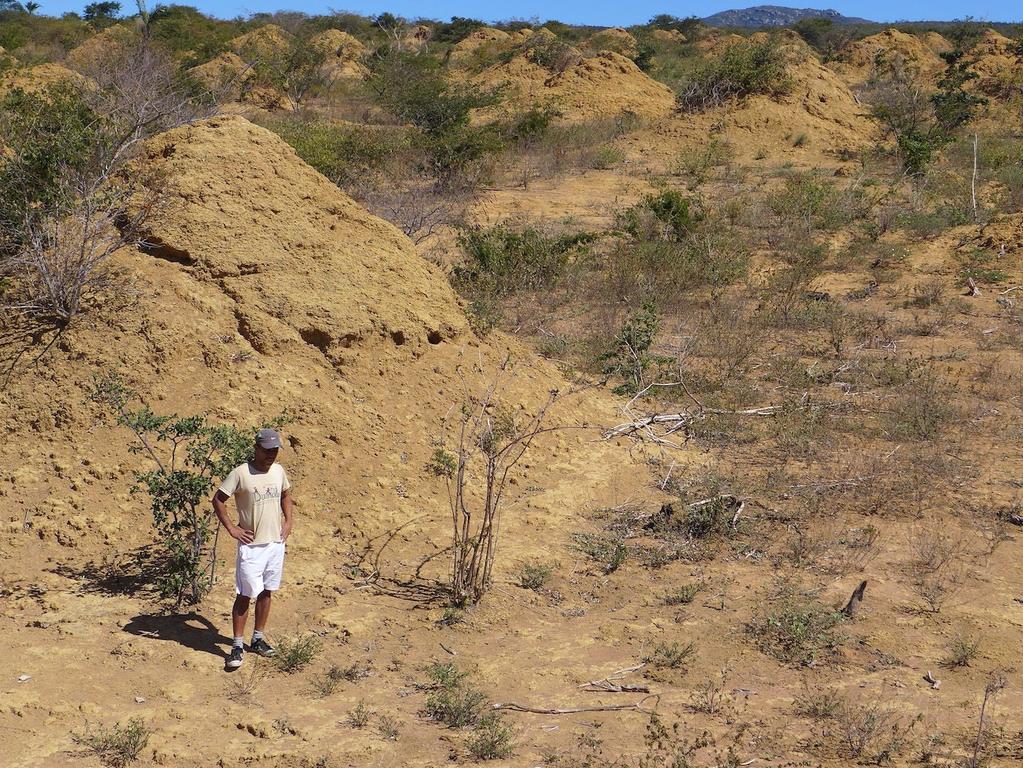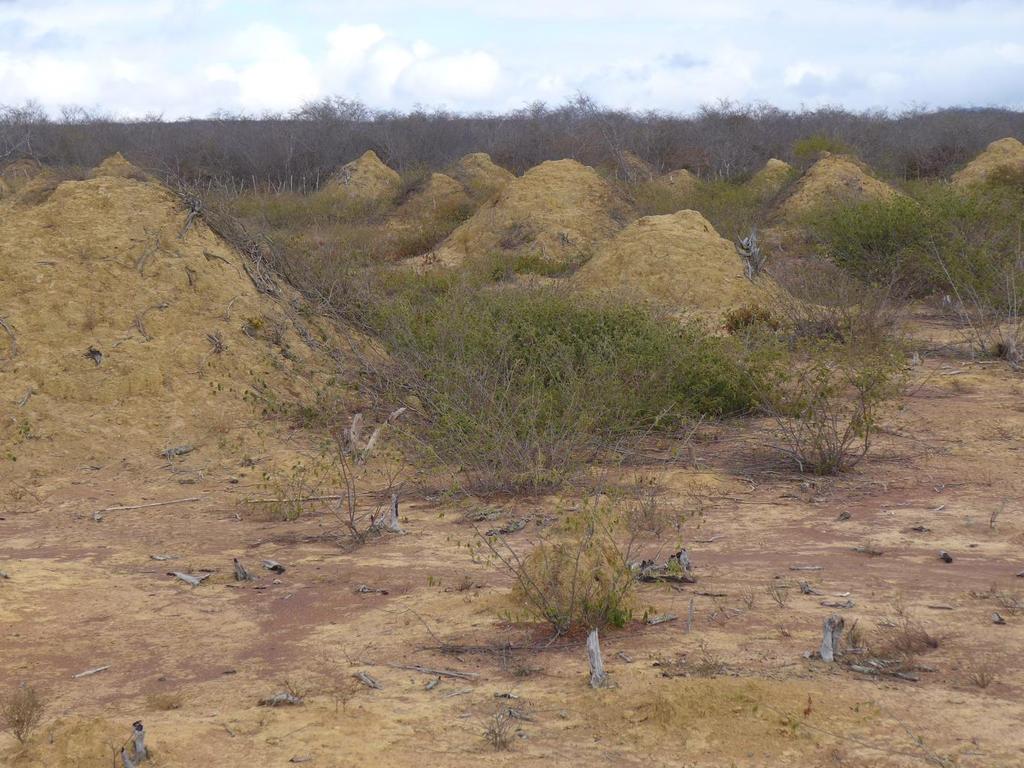Ancient termite mounds visible from space
They’ve grown as tall as the great Egyptian pyramids, and can be seen on Google Earth. It’s hard to believe these mounds were built by tiny insects.

About 200 million mounds of soil, built by termites in Brazil over thousands of years, have grown so large they can be viewed from space.
These mounds were largely hidden from site until researchers discovered them by clearing parts of the dry, dense caatinga forests in northeastern Brazil.

Researchers studying the composition and age of the mounds released their findings in the scientific journal Cell Biology this month.
According to the report, the 200 million termite mounds were built during a period of 4,000 years and are made up of approximately 50,970L of soil.
If combined, researchers estimate these mounds, which are still inhabited by termite colonies, would cover an area the size of Great Britain.

Scientists from the University of Salford in Manchester have studied the structures, led by Stephen Martin.
Mr Martin concluded that the amount of soil excavated from these mammoth mounds would be “equivalent to 4,000 great pyramids of Giza, and represents one of the biggest structures built by a single insect species”.
Each termite mound is approximately 2.4m tall and about 9m in diameter, researchers claim.
They were built over thousands of years, as the single species of termites gathered dirt to build interconnected tunnels and soil to make the mounds.
They did this all while feasting on dead leaves from the nearby caatinga forests.

A researcher from Brazil’s Universidade Estadual de Feira de Santana, Roy Funch, said the structure were ancient and extremely impressive.
“This is apparently the world’s most extensive bio-engineering effort by a single insect species,” Mr Funch said.
“Perhaps most exciting of all, the mounds are extremely old — up to 4,000 years, similar to the ages of the pyramids.”
According to the study, the mounds are a similar age to the world’s oldest known termite mounds, found in Africa.
“Soil samples collected from the centres of 11 mounds and dated … indicated mound fill dates between 690 to 3,820 years ago,” the study said.

According to Mr Martin, a single termite species is believed to be responsible for the intricate work and the networks they have built effectively allow them to “access dead leaves to eat safely and directly from the forest floor”.
“It’s incredible that, in this day and age, you can find an ‘unknown’ biological wonder of this sheer size and age still existing, with the occupants still present,” Mr Martin said.
This story originally appeared on Fox News and has been republished here with permission.



